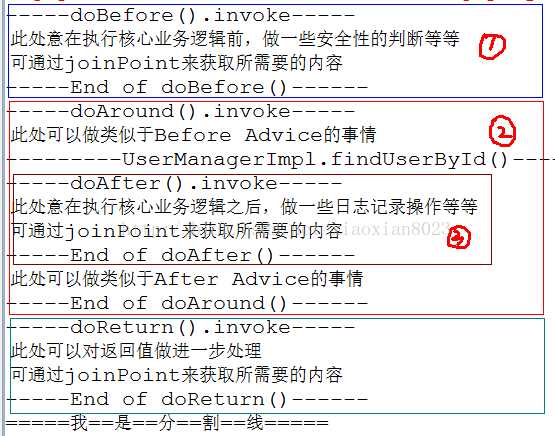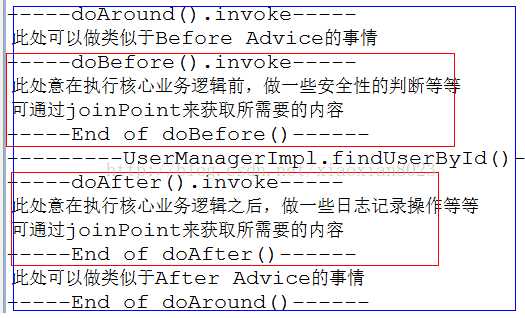标签:
上篇博文《3幅图让你了解Spring AOP》中介绍了aop通知类型,AOP的配置方式有2种方式:xml配置和AspectJ注解方式。今天我们就来实践一下xml配置方式。
http://blog.csdn.net/xiaoxian8023/article/details/17258933
我采用的jdk代理,所以首先将接口和实现类代码附上
单独写一个Advice通知类进行测试。这个通知类可以换成安全性检测、日志管理等等。
只有Advice还不行,还需要在application-config.xml中进行配置:
编一个客户端类进行测试一下:

值得注意的是Around与Before和After的执行顺序。3者的执行顺序取决于在xml中的配置顺序。图中标记了3块,分别对应Before,Around,After。其中②中包含有③。这是因为aop:after配置到了aop:around的前面,如果2者调换一下位置,这三块就会分开独立显示。如果配置顺序是aop:after -> aop:around ->aop:before,那么①和③都会包含在②中。这种情况的产生是由于Around的特殊性,它可以做类似于Before和After的操作。当安全性的判断不通过时,可以阻止核心业务逻辑的调用,这是Before做不到的。


使用xml可以对aop进行集中配置。很方便而简单。可以对所有的aop进行配置,当然也可以分开到单独的xml中进行配置。当需求变动时,不用修改代码,只要重新配置aop,就可以完成修改操作。

标签:
原文地址:http://www.cnblogs.com/kailing-con/p/4306367.html